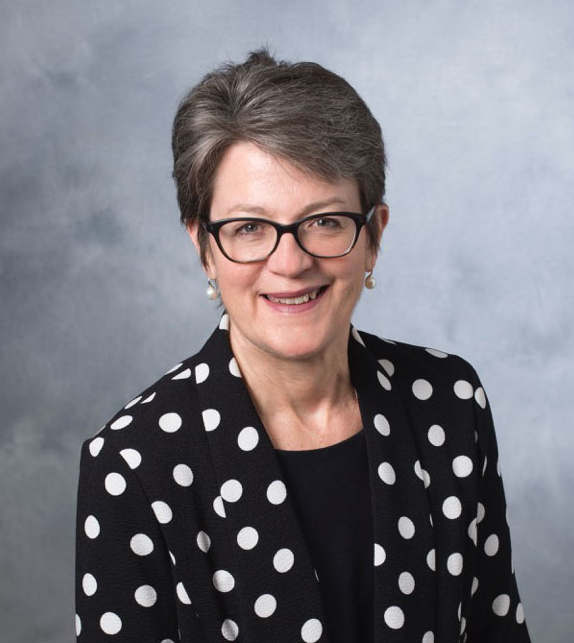Time to Submit Your Church Statistics and Final Apportionment Payments
It’s that time of year for churches to report their 2025 attendance, ministries, and financial records to the conference office. Reports are due Jan. 31. A…
Adapted from the Bishop's column on 1/02/2013

As the new year comes and the cabinet and I begin our work, I want to describe my process for appointment-making. The appointment-making process is sometimes perceived as mysterious, cloaked in secrecy and intrigue. But I want to bring as much transparency to it as I can, recognizing that in any human resource work, there is a level of confidentiality. Also, I intend to make a few changes to what you have been accustomed to in the past.
The overall goal in appointment-making is to match clergy’s gifts, experience and needs with a congregation for missional reasons. Appointment-making is an art and not a science because there are many factors that go into appointment-making. We all recognize that there are other factors than missional ones that impact itinerancy, such as the level of financial support, spouse’s employment, ages of children, etc., which we try to take into account.
Consultation is the key foundation of a missional match. Throughout the year, the district superintendent is in consultation with both clergy and congregations to determine the gifts and needs of both. Written profiles are essential and are intended to be updated each year. When a change in appointment has been determined, the district superintendent has another opportunity to determine the needs of the congregation. When clergy’s intentions or needs change, it’s critical that contact is made with the district superintendent so he/she has that information. Consultation is, in a sense, on-going.
So what happens when the cabinet comes together to make appointments? The church that is open is described by the district superintendent to the cabinet, highlighting strengths, struggles, opportunities and specific needs for clergy leadership. Following the description, a list of clergy is generated by all the cabinet members who suggest clergy on his/her district or any other that comes to mind in light of the description. In order to make good missional matches, it’s important to broaden the list of potential clergy for any “open” church.
Therefore, in early January an email will go out to all active clergy announcing the churches where a change of appointment has already been announced (mostly through retirements). I call these “clear opens.”
When this list comes out, it will give a brief description of the church and an invitation for clergy to let their district superintendent and the district superintendent of the church know that he/she is interested in being considered for that church, citing how one’s gifts match the description.
The district superintendents will bring all the names of those who indicate their interest in a given “open church” to the cabinet. The district superintendents will also bring their own lists of names (which they always do in appointment-making). In addition to these two lists of names, the cabinet together usually generates more as it discerns the congregation’s needs. Names, then, are considered through all three avenues.
I have used this method of inviting people to respond to “clear opens” in Minnesota and found it to be helpful in identifying a wider group of people who might be interested in a particular church. I have found that it’s easy to overlook clergy in the discernment process and when clergy demonstrate their interest with specific reasons, it’s helpful information in the appointment-making process. Of course, as a cabinet, we are committed to the full utilization of our multi-cultural body of clergy, male and female, no matter who submits their names or not.
The selection process occurs through holy conferencing; prayer and dialogue. Each appointment is made in prayer for the clergy on the list as well as the congregation, seeking God’s guidance and wisdom as we consider the congregation and each clergy on the list. Through a period of prayer and dialogue, the list is reduced numerous times until one person is selected to serve the congregation.
When a clergy is called by a district superintendent with a specific appointment, the DS will give the missional reasons for why he/she has been selected. When a clergy is taken into a SPRC, the DS will give the missional reasons why the clergy has been selected for them. No one ever matches the “wish list” of either church or clergy 100% so it’s important to describe what makes for a missional match.
Every Monday morning an email will come from my office to all clergy announcing the appointments that have been announced in churches. This will keep clergy abreast of appointments as they are made and announced. If you are not on our email list, please visit the homepage to sign up for our eNews subscription at the bottom of the page.
Please keep the cabinet and me in your prayers during the appointment-making season so that God will work through us in our responsibility to serve this annual conference.
May you see God’s blessings in your life in this new year!
~Bishop Sally Dyck
It’s that time of year for churches to report their 2025 attendance, ministries, and financial records to the conference office. Reports are due Jan. 31. A…
As the U.S. government prepares to withdraw from the Paris Agreement on climate change effective Jan. 27, leaders of 14 Chicago-area Christian deno…
In his reflection, Rev. Dr. Charles A. Woolery Sr., challenges readers to move beyond a comfortable, sanitized remembrance of Rev. Dr. Martin Luther King Jr. to engage hi…
Clergy and lay members will gather June 14–16 in Schaumburg for the Northern Illinois Conference’s 187th Annual Conference, centered on the theme “Practicing Hope.” With inspiring worship, engaging…